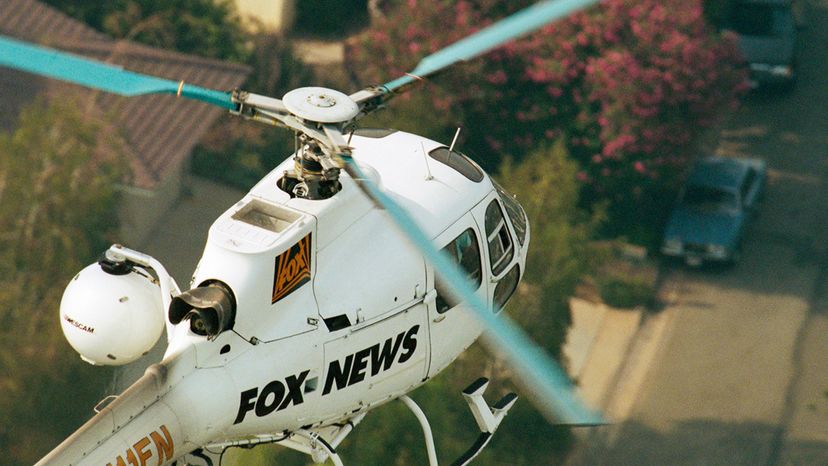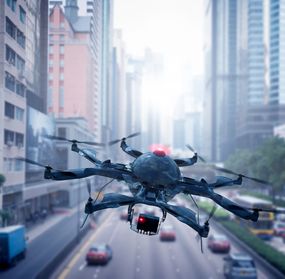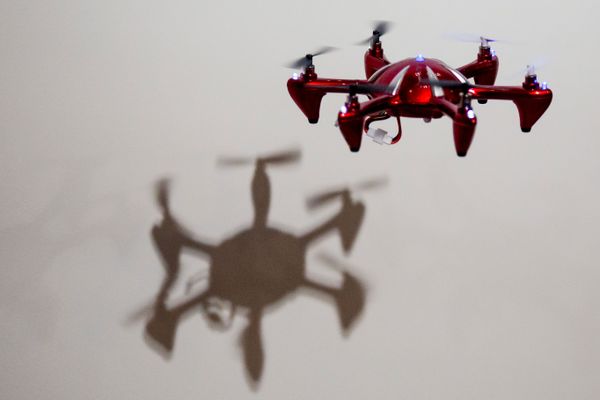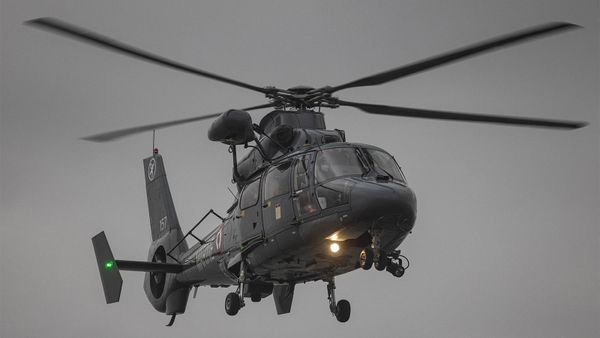
When Hurricane Harvey hit Texas in August 2017, readers of USA Today's website were able to watch dramatic aerial video footage of the city of Houston flooding, a nearby chemical plant immersed under water and other startling views of the disaster.
But the eye-catching clips weren't shot by a cameraman perched in a helicopter, as they might have been in the past. Instead, they were captured by robotic drones equipped with cameras and piloted by operators on the ground.
Advertisement
Ever since the Federal Aviation Administration issued new regulations in 2016 making it easier for news organizations to use the flying robots, drones have become a hot new news-gathering tool. Prior to the change, a drone had to be piloted by someone trained and licensed for manned aircraft, requiring hours of cockpit experience. The new rules only require an operator to study and pass a test to be certified for drones.

The updated rules "resolved a lot of uncertainty about TV station use of drones," Henry H. Perritt, Jr., a professor at Chicago-Kent College of Law and co-author of the 2016 book "Domesticating Drones: The Technology, Economics, and Law of Unmanned Aircraft," says in an email.
In fact, some journalism training programs are making big investments in a drone future. Matt Waite is a journalism professor at the University of Nebraska-Lincoln who heads the school's Drone Journalism Lab. He's trained 390 journalists across the nation in the past year on how to use drones, and he says that probably about half of them have gone on to obtain FAA certification. He estimates that somewhere between "dozens to low hundreds" of U.S. news outlets — not just TV stations, but newspapers and radio stations, too — now use unmanned aircraft in news gathering.
Drone use is rising at a time when the once seemingly ubiquitous news helicopter is in decline. While definitive numbers aren't available, TVNewsCheck, an industry publication, estimated in 2013 that there were only 100 to 120 news choppers still flying around the country, down from 180 before the late-2000s economic downturn.
For news outlets, drones are a far less expensive news-gathering tool than helicopters, which can cost $3 to $4 million apiece, including the cost of cameras and equipment, and consume a significant amount of fuel.
"You can buy a really good drone kit for about $1,800," says Waite. "That's about what it would cost you to fly a helicopter for an hour."
Waite says that drones are a more affordable way to supply the ever-increasing demand for video clips that can be posted on websites, and that the technology is well-suited for covering certain types of news events: "tornadoes, hurricanes, floods, massive traffic backups, stories like that," he says.

Perritt adds: "Drones have the potential to supplant news helicopters to some degree and to provide aerial coverage for stations that cannot afford helicopters." Because of their lower cost, he says, "the main advantage is that every news crew can go out with one and decide when its coverage might be useful."
Drones have another advantage as well — since they're unmanned, journalists don't face the same risks that they would in news choppers. A recent helicopter accident in New Mexico, for example, claimed the life of a veteran TV reporter for a local station.
But drones also have limitations that give helicopters an advantage for other types of stories, according to Waite. For example, the FAA prohibits operators from flying drones directly over people, which would make it difficult to get close to a massive protest rally or a celebratory parade for a sports championship win. Most drones' electric battery packs only allow them to stay aloft for 20 minutes, while helicopters can stay in the air for hours at a time. And FAA regulations require that drone operators on the ground must maintain visual contact with the unmanned aircraft.
Drones, Waite points out, would have been ill-equipped to cover what is perhaps the most famous aerial-footage story ever — 1994's two-hour police pursuit of football star-turned-murder suspect O.J. Simpson's white Ford Bronco on the Los Angeles-area freeway system. News copters were able to transmit live video of the chase, and it aired nonstop on TV viewers' screens.
That's why there probably will be room for both copters and drones in journalism for the foreseeable future. Some news organizations, such as Jacksonville, Florida-based TV station WJXT, rely on both.
"We use our Sky4 helicopter here in Jacksonville to cover breaking news and to get to a scene quickly," explains Bob Ellis, the station's vice-president and general manager, in an email. "But drones often times provide far better pictures and can help tell a much better story. In our coverage after Hurricane Irma just last week we used drone footage to show damaged areas that showed exactly what happened far better than using a helicopter could."
"I believe there's a place for all these technologies to be utilized," he says. "I prefer to look at it from a content standpoint, 'What is the technology that helps best tell the story?' That's how we look at here at my station."
Perritt, the "Domesticating Drones" author, adds: "Drones won't ever completely replace news helicopters. Because they are so much cheaper, they will be used in some markets instead of helicopters, and stations in big markets may renegotiate their helicopter contracts over time to use less helicopter time, filling the gap with drones."
Advertisement

